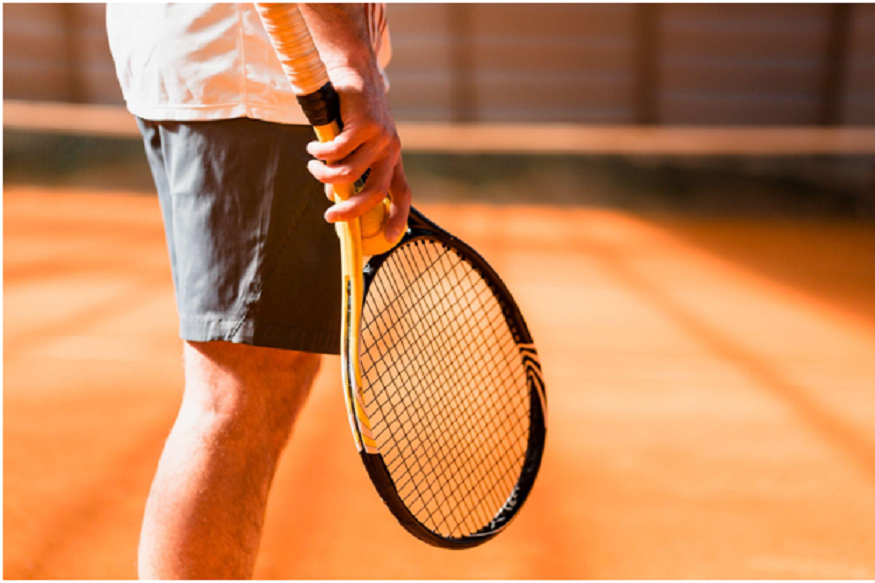10 Essential Steps in Tennis Racket Fabrication for Crafting the Perfect Serve
Fabricating a tennis racket is a blend of art, engineering, and precision, requiring detailed attention at every step to ensure optimal performance on the court. A well-crafted racket can greatly influence a player’s game by enhancing power, control, and comfort. Whether you’re a manufacturer or an enthusiast aiming to understand the process, knowing the key steps in tennis racket fabrication is crucial. From material selection to final quality checks, each phase contributes to the racket’s performance and durability. In this blog, we’ll walk you through the 10 essential steps for fabricating a high-quality tennis racket.
1. Material Selection
The foundation of any tennis racket begins with selecting the right material. Common materials include graphite, carbon fiber, and aluminum. Graphite and carbon fiber are preferred for their lightweight and robust properties, making them suitable for professional-grade rackets. Aluminum, while heavier, is a cost-effective option for beginner or recreational players. The material choice will dictate the racket’s overall weight, durability, and performance characteristics.
2. Designing the Frame
Once the material is chosen, the next step is to design the racket’s frame. This involves deciding on the head size, beam width, and shape. Larger head sizes provide a bigger sweet spot, while smaller ones offer better control. The frame design also influences the racket’s aerodynamics and balance. Using Computer-Aided Design (CAD) software, manufacturers create precise templates to ensure the frame meets the desired specifications.
3. Molding and Forming
The raw material is then molded into the desired shape using advanced techniques like compression molding or extrusion. For graphite and carbon fiber rackets, layers of material are placed into a mold and subjected to high pressure and heat to create a rigid and durable frame. This step ensures the racket’s structural integrity and sets the foundation for further processing.
4. Cutting and Trimming
Once the racket frame is formed, excess material is trimmed off to achieve the desired dimensions. Precision tools and machinery are used to cut the frame to its exact specifications. Any inconsistencies at this stage can impact the racket’s balance and performance, making this step critical in the fabrication process.
5. Drilling String Holes
Holes for the strings are drilled into the frame with precision to ensure proper alignment and spacing. These holes, also called grommet holes, must be evenly distributed around the head to provide balanced string tension. Special care is taken to prevent cracks or fractures in the frame during drilling, as this can compromise the racket’s durability.
6. Applying the Handle and Grip
The handle is a crucial component of the racket, as it directly impacts the player’s grip and comfort. A hollow tube or core is attached to the frame to form the handle, and it’s covered with grip material, such as leather or synthetic polymers. The grip size is customized based on the intended user’s hand size, ensuring maximum comfort and control. Overgrips can also be added for additional cushioning and tackiness.
7. Painting and Finishing
Aesthetic appeal is an important part of racket fabrication. The frame is painted and finished with durable coatings to enhance its appearance and protect it from wear and tear. Decals, logos, and brand designs are applied during this step. High-quality paints and finishes ensure that the racket maintains its visual appeal even after extensive use.
The use of high-quality paints and finishes ensures the racket maintains its visual appeal over time, even after rigorous play. This attention to detail not only enhances the racket’s marketability but also boosts player confidence, as they feel equipped with a stylish and premium product on the court. Ultimately, a well-designed racket combines functionality with aesthetics, delivering performance and pride to the user.
8. Stringing the Racket
Stringing is one of the most intricate steps in racket fabrication. The type of strings (natural gut, polyester, or synthetic) and the tension applied significantly influence the racket’s performance. The strings are woven through the pre-drilled holes in a crisscross pattern, and the tension is adjusted based on the player’s preference. Proper stringing ensures consistent ball bounce, control, and power.
9. Balancing and Weight Adjustment
The balance and weight of the racket are fine-tuned during this stage. Using specialized equipment to buy padel racket Dubai, the racket is tested for its weight distribution, ensuring it meets the desired balance point (head-heavy, head-light, or evenly balanced). Adjustments are made by adding or removing weight, typically through lead tape or other materials, to achieve the ideal specifications
10. Quality Control and Testing
The final step in tennis racket fabrication is crucial – rigorous quality control and testing. This process ensures that every racket meets the highest performance and durability standards before it reaches the player. Each racket undergoes a thorough inspection for structural integrity, confirming that the frame is free of cracks or weaknesses that could compromise its durability during gameplay.
Weight and balance are also meticulously tested, ensuring the racket aligns with the intended specifications, whether head-heavy, head-light, or evenly balanced. String tension is evaluated to confirm consistency and proper alignment, as these factors significantly influence ball control, power, and precision during play.
To simulate real-world conditions, manufacturers often conduct play tests, replicating the stress and impact the racket will endure during a match. These tests help identify any potential performance issues, such as vibrations, uneven string tension, or imbalances that could affect gameplay.
Only rackets that pass all quality control checks are approved for sale or distribution. This rigorous process guarantees that players receive a product that is not only reliable and durable but also optimized for performance. For both recreational players and professionals, such quality assurance ensures confidence and satisfaction on the court.
Fabricating a tennis racket is a complex process that requires precision, expertise, and attention to detail. From selecting the right materials to the final quality checks, each step contributes to crafting a racket that enhances a player’s performance and ensures durability. By understanding these 10 essential steps, you can appreciate the craftsmanship behind every racket and make informed choices when selecting or customizing your own. Whether for professional athletes or recreational players, a well-fabricated tennis racket is key to unlocking success on the court.

